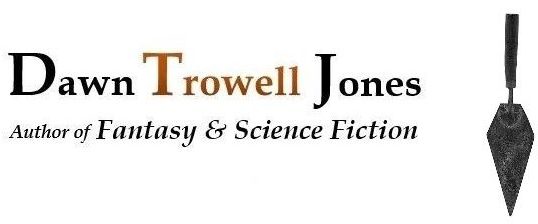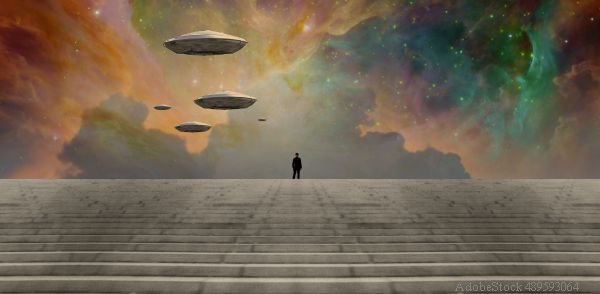 I received an email today from Luna Station Quarterly announcing its newest issue. It says, “There is always hope… even in this troublesome batch of stories… where grief, loneliness and other prickly emotions take center stage.” Immediately drawn in by this description, I thought of Ukraine and the climate crisis and what feels like constant civil unrest, and it struck me that we live in a troublesome batch of stories. And yet there’s hope.
I received an email today from Luna Station Quarterly announcing its newest issue. It says, “There is always hope… even in this troublesome batch of stories… where grief, loneliness and other prickly emotions take center stage.” Immediately drawn in by this description, I thought of Ukraine and the climate crisis and what feels like constant civil unrest, and it struck me that we live in a troublesome batch of stories. And yet there’s hope.
Though just one among a whole multitude of species on this planet facing trouble, humanity seems to see itself as extraordinarily resilient. Doesn’t it? Brilliant, the queen of the mountain, the first and favorite son who can weather any catastrophe, and up is the only direction because look at what all we know how to do.
A little reactive, maybe, but there are some who view us differently. Some suggest we are the far-flung result of a long recovery from some enormous cataclysmic regression, and we have not yet caught up with our predecessors. Not only that, we forgot them.
 As poetic as this may feel, if it’s true one or more technologically advanced civilizations came before us and didn’t succeed (died out), could there be a line that’s hard to cross, that sets us back again and again?
As poetic as this may feel, if it’s true one or more technologically advanced civilizations came before us and didn’t succeed (died out), could there be a line that’s hard to cross, that sets us back again and again?
It is interesting to look at our current geopolitical situation through this lens.
While taking my shower the other day, I was obsessing over the ouroboros for some reason. You’ve seen it, but for those who don’t know, the ouroboros is an ancient symbol thought to represent the cyclic aspects of nature and time, a symbol that shows up in both Eastern and Western neolithic art. It’s a snake eating its tail. I kept repeating this to myself—and as I became more conscious of my words, I realized they had an effect on how I felt about the ouroboros. A snake eating its tail is straightforward, but I get something else if I say “serpent” eating its tail, and something still more if I say “serpent consuming” its tail. It seems this symbol can suffer from a dry and clinical description. Symbols are supposed to be evocative.
If the serpent stands for knowledge, and it does across many cultures, then in these times of trouble, the ouroboros begins to look like a warning to me. Knowledge, perhaps because the serpent can live in darkness as well as the light – but also renewal and harmony, due to its ability to shed its skin and the mating of its tail and mouth, which have both agency and communion aspects. If the ouroboros is a warning instead of a platitude, could it be we’re only just now reaching the point in our development where we know how to interpret this message from our distant past? I don’t know. As a symbol, the ouroboros probably doesn’t have a specific meaning; its message is its pattern. But as I was saying, that day during my shower, like interpreting a Rorschach, I saw something else in it. What was this message? Knowledge consumes itself. Technological advances lead to consumption, which in turn leads to more knowledge and more consumption until knowledge consumes itself. A necessary and inevitable cycle.
Maybe. Know-how without wisdom, I guess. I know humanity is capable of great wisdom and beauty and courage, but I swear, this love of brinkmanship will give us a good solid kick in the pants before we’re through.
Here are a couple of images along these lines that have caught my eye, just to play. I may be a little obsessed.
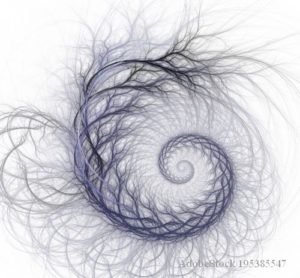 First up: three spirals. They’re called triskeles, like the Spirals of Newgrange, a pre-Celtic symbol also thought to represent harmony and the cycle of life. Though anthropologists don’t know for sure, some say they represent a “triple goddess” called Brigid (in Scotland, apparently, associated with snakes), but triskeles have been associated with other gods as well. A more mundane interpretation might be that they portray the “cyclone” behavior of reindeer herds when faced with a threat: invariably counterclockwise, they march in swirls that make them difficult targets for predators. Or maybe the swirls indicate a tiered irrigation technique that allows for a variety of “microclimates” for growing plants with different needs. But I can’t help wondering if the symbol reflects something more fundamental about reality, that perhaps these long-ago peoples half-remembered a distant, more-advanced past – whether truly understanding the image’s significance or just repeating it, I don’t know, but at least intuiting its importance. While thinking about this – and remembering that in some cultures “three” means “many” – I ran across an article in Scientific American titled “What is Spacetime Really Made Of?” in which theoretical physicist Natalie Paquette talks about representing space-time mathematically as “little circles, scattered across every point in space and time…, a curlicue dimension, looped back onto itself.” She says that as you shrink the “spatial direction” down to the smallest possible scale, something strange happens. Like when “you realize something that looks small and nearby is actually huge and distant,” the “dimension” pops out and an enormous new “spatial direction emerges.” On the scale of the universe? The article doesn’t say, but according its author Adam Becker, space-time may not function the way we think. It may not be the true bedrock of reality but emergent, with other fundamental components underneath, and that this discovery might possibly lead to the elusive theory of everything, even the creation of traversable wormholes. Sometimes I wonder if we keep confirming aspects of reality that our ancient forebears already knew, however they came to “understand” them.
First up: three spirals. They’re called triskeles, like the Spirals of Newgrange, a pre-Celtic symbol also thought to represent harmony and the cycle of life. Though anthropologists don’t know for sure, some say they represent a “triple goddess” called Brigid (in Scotland, apparently, associated with snakes), but triskeles have been associated with other gods as well. A more mundane interpretation might be that they portray the “cyclone” behavior of reindeer herds when faced with a threat: invariably counterclockwise, they march in swirls that make them difficult targets for predators. Or maybe the swirls indicate a tiered irrigation technique that allows for a variety of “microclimates” for growing plants with different needs. But I can’t help wondering if the symbol reflects something more fundamental about reality, that perhaps these long-ago peoples half-remembered a distant, more-advanced past – whether truly understanding the image’s significance or just repeating it, I don’t know, but at least intuiting its importance. While thinking about this – and remembering that in some cultures “three” means “many” – I ran across an article in Scientific American titled “What is Spacetime Really Made Of?” in which theoretical physicist Natalie Paquette talks about representing space-time mathematically as “little circles, scattered across every point in space and time…, a curlicue dimension, looped back onto itself.” She says that as you shrink the “spatial direction” down to the smallest possible scale, something strange happens. Like when “you realize something that looks small and nearby is actually huge and distant,” the “dimension” pops out and an enormous new “spatial direction emerges.” On the scale of the universe? The article doesn’t say, but according its author Adam Becker, space-time may not function the way we think. It may not be the true bedrock of reality but emergent, with other fundamental components underneath, and that this discovery might possibly lead to the elusive theory of everything, even the creation of traversable wormholes. Sometimes I wonder if we keep confirming aspects of reality that our ancient forebears already knew, however they came to “understand” them.
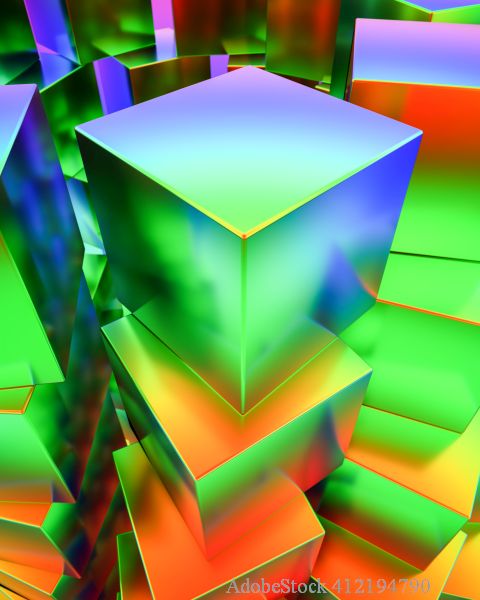 The Tower of Babel may be another pattern, like the ouroboros, and another danger-point in the life cycle of an advanced technological civilization. Generally considered a creation myth explaining why we have multiple languages, the story exists in similar form all around the globe, and in cultures that as far as we know never met. There have been many interpretations, often based on the local politics of the respective regions and eras [here’s an overview on Wikipedia]. But given their similarities, I wonder if the myth means something else, and instead illustrates a danger to which all large societies are prone. Or perhaps, as Graham Hancock claims in Fingerprints of the Gods: The Evidence of Earth’s Lost Civilization (1995), the world was indeed united once under the umbrella of a vast advanced civilization, and the “babble” problem is so pernicious that the warning survived intact in spite of the fragmentation that came later. This problem may be rearing its head right now. I suspect the issue is really noise – the tower may not have been a building, not a ziggurat, but modes of communication. The noise “offended” God, or the gods, who to punish them destroyed their unity, and over time the scattered people could no longer understand one another. But obviously, God/the gods are a stand-in for a fudge factor. One possibility is that people broke off from one another psychologically first, then scattered; communication broke down, and then their language diverged. There was just too much trivial and divisive talk among a great many people to the point where they lost the ability to act cohesively. That’s the message of the myth, if you ask me. In my opinion, only an advanced civilization could make communication so easy, widespread, and “cheap” as to interfere with its ability to function. We know reliable channels of communication are key to a civilization’s development. But cheap and overwhelming or false and trivial communication may be key to its demise. Too much noise as a result of snowballing advances that become increasingly hard to adapt to may be exactly the sort of problem this myth – and the snake eating its tail – have been trying to warn us about.
The Tower of Babel may be another pattern, like the ouroboros, and another danger-point in the life cycle of an advanced technological civilization. Generally considered a creation myth explaining why we have multiple languages, the story exists in similar form all around the globe, and in cultures that as far as we know never met. There have been many interpretations, often based on the local politics of the respective regions and eras [here’s an overview on Wikipedia]. But given their similarities, I wonder if the myth means something else, and instead illustrates a danger to which all large societies are prone. Or perhaps, as Graham Hancock claims in Fingerprints of the Gods: The Evidence of Earth’s Lost Civilization (1995), the world was indeed united once under the umbrella of a vast advanced civilization, and the “babble” problem is so pernicious that the warning survived intact in spite of the fragmentation that came later. This problem may be rearing its head right now. I suspect the issue is really noise – the tower may not have been a building, not a ziggurat, but modes of communication. The noise “offended” God, or the gods, who to punish them destroyed their unity, and over time the scattered people could no longer understand one another. But obviously, God/the gods are a stand-in for a fudge factor. One possibility is that people broke off from one another psychologically first, then scattered; communication broke down, and then their language diverged. There was just too much trivial and divisive talk among a great many people to the point where they lost the ability to act cohesively. That’s the message of the myth, if you ask me. In my opinion, only an advanced civilization could make communication so easy, widespread, and “cheap” as to interfere with its ability to function. We know reliable channels of communication are key to a civilization’s development. But cheap and overwhelming or false and trivial communication may be key to its demise. Too much noise as a result of snowballing advances that become increasingly hard to adapt to may be exactly the sort of problem this myth – and the snake eating its tail – have been trying to warn us about.
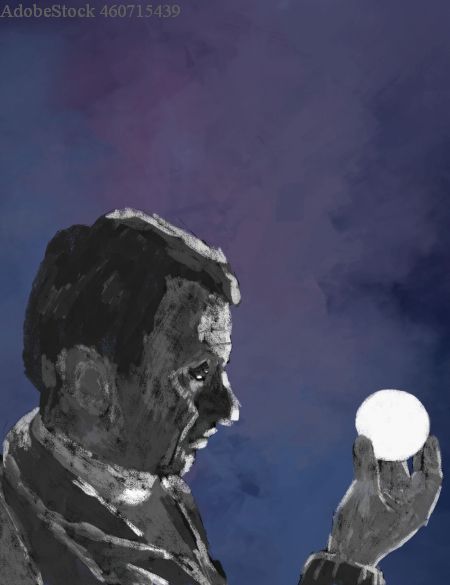 However, part of the reason why anthropologists claim civilization began at a certain time and no sooner has to do with the domestication of grains, an evolutionary path we can read in their DNA. But I see a potential problem with assuming our predecessors used the same domesticated grains we use today – like wheat, barley, oats, and rice. Why? Because absence of proof is not proof of absence if you’re looking in the wrong place. A domesticated species tends to revert back to its wild state quickly if it breeds with its wild cousins or even with other domesticated variations. Darwin spoke of this in On the Origin of Species.
However, part of the reason why anthropologists claim civilization began at a certain time and no sooner has to do with the domestication of grains, an evolutionary path we can read in their DNA. But I see a potential problem with assuming our predecessors used the same domesticated grains we use today – like wheat, barley, oats, and rice. Why? Because absence of proof is not proof of absence if you’re looking in the wrong place. A domesticated species tends to revert back to its wild state quickly if it breeds with its wild cousins or even with other domesticated variations. Darwin spoke of this in On the Origin of Species.
And of course, if there was a prior technologically-advanced civilization similar to our own that rose and fell, the star systems that myths and legends tell us were home to the “gods” might instead be where our kinsmen went when their world tumbled. We’d do the same, if able. Once upon a time, with no way to reach them any longer, our ancestors may have looked up at the stars and wondered how their brave spacemen fared.
One more thought. If a cataclysm were to hit us right now severe enough to blast us into the stone age, as people like to say, which of our world’s many cultures do we think would be best equipped to survive? Probably not ours. I say, the ones best adapted to the physical and psychological stresses of a world without technology will be those that have endured essentially unchanged for thousands of years. Keeping this in mind, why wouldn’t the most conservative cultures of a far distant past have been the ones to survive before, carrying a dim torch for their lost kin in the form of myth? Stone-age cultures continue on this planet at this very moment. Humanity still has a toe in that water.
Importantly – to me, anyway, or I would not have written this post – the idea that we could read messages from a prior civilization like ours that blossomed and failed, real or imaginary, means we might be able to take steps now to avoid the same fate, or at least postpone it long enough to build upon past wisdom. Where we imagine they left off. Our wisdom, right? I try to remind myself that a cyclic path can still move me forward, same as how Earth corkscrews through the cosmos. I do enjoy having hope.
